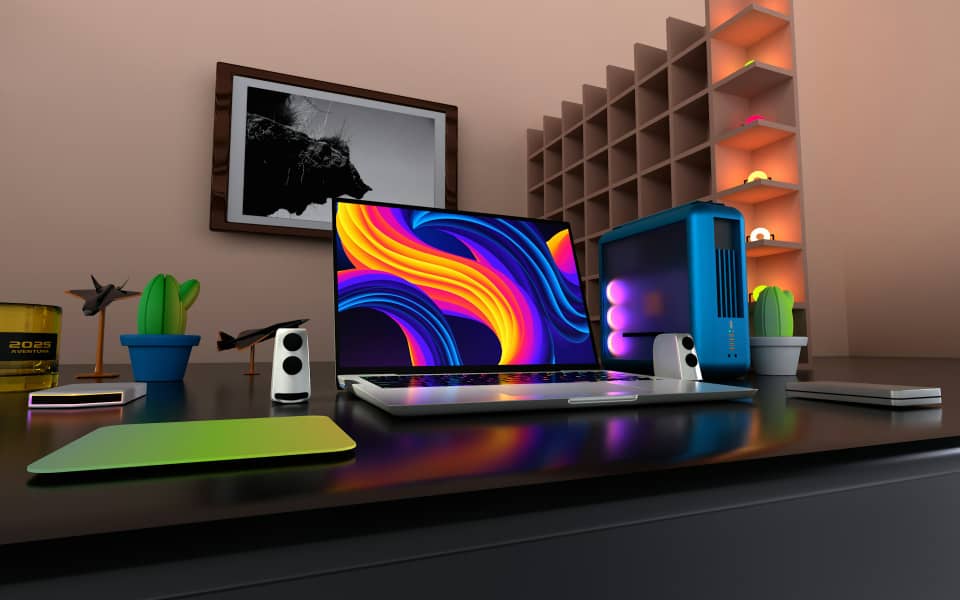How to Flip Items Online for Quick Profit (Even if You’re Broke)
 Kelly Sikkema // Unsplash
Kelly Sikkema // Unsplash
Forget the idea that you need savings or startup capital to begin. Flipping items for profit online isn’t just possible when you’re broke; it’s one of the smartest, fastest ways to build cash flow from nothing. If you’ve got a phone and a few hours, you have what it takes to make this work.
Flipping means finding underpriced items and reselling them at a higher price. It’s part research, part hustle, and part knowing what people want. What makes it attractive? You control the inventory, the price, and how fast you move. The only barrier is your willingness to act.
This isn’t a get-rich pitch. It’s about creating daily or weekly profit by turning overlooked items into money. You’ll learn how to identify high-demand products, where to source inventory even with no money, and how to build momentum from your first sale. Let me share with you some strategies that work.
Step 1: Find Items You Can Source for Free or Cheap
When you’re broke, inventory has to come from creative places. You can’t compete with resellers who buy pallets or wholesale lots. The good news is that you don’t need to. The real skill lies in spotting underpriced value where others see clutter.
Start with your own home. You’d be surprised how many unused items like electronics, books, tools, clothing, or furniture are sitting around, ready to be flipped. That old tablet or a stack of hardcovers can turn into your seed money.
Explore free listings on platforms like Facebook Marketplace, Craigslist, and Nextdoor. People often give away perfectly usable stuff just to clear space. The key is speed—respond quickly, be polite, and pick up without delay.
Keep an eye on your neighborhood’s curb alerts or bulk pickup days. Many communities allow residents to discard large items at the curb—items that often still work or just need minor fixes. A working mini-fridge, coffee table, or bike frame could earn you a quick $30 to $100.
Don’t overlook community groups where members give things away for free. Many Facebook groups exist for local “Buy Nothing” or “Free Stuff” communities. These groups reward consistency and courtesy. Be the person who shows up reliably, and you’ll often be the first one people message.
You’re not collecting junk. You’re finding overlooked value. One person’s clutter is your quick cash opportunity.
Step 2: Understand What Sells Quickly
If you’re flipping for fast profit, you can’t wait weeks for the right buyer. You need items with consistent demand and a short turnaround. Speed becomes your advantage.
Think of everyday usefulness. Bluetooth speakers, routers, coffee makers, microwaves, dumbbells, baby strollers, and home office chairs. These are all examples of items that move quickly. They’re things people use immediately, which means you’re not selling luxury, you’re selling convenience.
The best way to know what sells is to look at what’s already sold. Go on eBay and filter by “Sold Listings” in your chosen category. Or browse Facebook Marketplace and look at items marked as sold to see what price they moved at. Avoid collectibles, niche electronics, or trendy gadgets unless you’re already familiar with the market. Stick to products that can be flipped within 48 to 72 hours.
Step 3: List Like a Pro (Even If You’re a Beginner)
Your listing does the heavy lifting. It doesn’t need to be fancy, but it must be clear. Buyers don’t want to guess—they want confidence.
Use natural light and take clean, well-composed photos. Show every angle. Highlight any damage. Make it feel like the buyer is holding the item in their hands. A quick wipe down before taking pictures helps boost the item’s perceived value.
Your title and description need to be direct and searchable. A listing like “iPhone 11, 128GB, Unlocked – Works Perfectly – $180” tells the buyer exactly what they’re getting. Don’t try to be cute or vague. Be honest about the condition and any missing parts or quirks. Trust leads to repeat buyers and avoids refund headaches.
Make sure you mention whether you offer pickup, delivery, or shipping. If you’re doing local deals, be clear and courteous in your messages. People appreciate straightforward communication and fast replies.
Step 4: Sell on the Right Platforms
Not all platforms serve the same flipping goals. The key is matching the item to the right audience.
Facebook Marketplace works best for fast, local flips. It has no fees, and messages happen in real-time. If you’re selling something bulky or common, like furniture or kitchen appliances, it’s the ideal place.
OfferUp is another local app with less saturation. It’s easy to use, and many buyers aren’t looking at Marketplace.
eBay works better when you’re willing to ship. National exposure means higher odds of finding the right buyer for electronics, gadgets, or brand-name items. Just be aware of seller fees and shipping costs.
Mercari is great for small items—especially clothes, accessories, and lightweight gadgets. It’s less aggressive than eBay but still active.
Once you know where your items tend to sell fastest, stick with it. Avoid cross-posting too many listings unless you can manage the messaging. And always price strategically. Setting your asking price $5 to $15 higher than your target gives you negotiation room while keeping the perceived value intact.
Step 5: Reinvest and Scale
The first flip gives you breathing room. The second gives you a plan. By the third, you’re no longer guessing. You’re running a system.
Don’t spend your first profits. Reinvest them. Use that cash to buy undervalued items that flip reliably. This might mean picking up a $10 bookshelf that sells for $40, or a working smartphone charger for $3 that sells for $15. Each sale buys you either more inventory or more time. Track what sells and how quickly. Use a simple spreadsheet or notes app. Patterns will emerge. You’ll start to understand which items move fastest in your area and what buyers consistently want.
Eventually, you’ll stop chasing flips and start building a rhythm. That’s when this becomes more than a side hustle. It becomes your funding engine, built from zero.
Flip Smarter: High-Margin Items and Advanced Flipping Tactics
Once you’ve tested the waters flipping everyday items, it’s time to level up. Start thinking like a business. The goal is no longer just quick cash; it’s consistent profit with less guesswork. That starts with knowing what sells high and how to get your hands on it without wasting time.
High-Margin Items Worth Your Time
Not all products are created equal. Some hold their value far better than others, and once you know what to look for, you’ll start spotting overlooked gems everywhere—from garage sales to Facebook Marketplace.
Take vintage electronics, for example. They often sit in people’s basements collecting dust, yet collectors and nostalgic buyers pay premium prices. A Nintendo 64 found for $20 can resell for $100 or more. Same with VHS players, cassette decks, or original PlayStations—especially if you test them and clean them up properly.
Power tools are another goldmine. Contractors and DIY enthusiasts alike trust brands like DeWalt and Makita. Even scratched or dusty tools can sell fast if they still work. A cordless drill set you buy for $50 might flip for $120 locally, no shipping involved.
Used sneakers also have high resale potential. While limited-edition drops get all the hype, everyday models like Air Max 97s or retro Jordans consistently sell well. Clean them up, photograph from the right angles, and post them with honest but confident descriptions.
Musical instruments hold value better than most people think. Guitars, keyboards, and mixers resell quickly, especially if you’re targeting students, hobbyists, or semi-pro musicians. A used Yamaha keyboard that costs you $40 at a yard sale could go for $200+ online.
Even small kitchen appliances can deliver solid returns. Bread makers, espresso machines, and high-end blenders from brands like Vitamix or Breville are always in demand. Plug them in, confirm they work, and post them with clean photos and pricing just under retail.
And if you’re comfortable with research, collectibles like Pokémon cards or vintage board games can be surprisingly lucrative. Learn what’s rare, how to spot fakes, and how to price accurately. These are niche—but that’s the point. Less competition, higher margins.
Advanced Strategies That Take You Beyond Hustling
At a certain point, you realize flipping isn’t just about finding deals. It’s about building a repeatable system that saves time and boosts returns.
Sharpen your sourcing strategy. Retail arbitrage is one powerful method. Use the Amazon Seller or Scoutify app when browsing clearance sections at stores like Walmart or Target. With one quick scan, you’ll know if something is worth reselling. If the margin after fees is decent, you grab it. No guessing.
Estate sales and online auctions are goldmines, too. These aren’t just for antique lovers. You can often find entire lots of underpriced tools, furniture, electronics, or collectible books—items you can break up and resell individually for a strong ROI.
Figure out what sells well in your area or online, and start buying in bulk. Reach out to local sellers moving multiple items, offer to clean out garages, or check liquidation websites. Volume gives you leverage, and consistency gives you control.
Speed matters. Listing faster means more sales, more cash flow. Use a simple photo setup—white wall, natural light, no distractions. Write a description that’s short but specific. Mention condition, brand, and model. Skip fluff like “great item” and go straight to value.
Don’t waste time jumping between apps. Tools like List Perfectly or Vendoo let you post one listing across eBay, Facebook Marketplace, Mercari, and more, all at once. That’s exposure on multiple platforms in minutes, not hours.
Treat this like the business it is. Track your flips: what you paid, what you made, how long it took to sell. Over time, patterns will jump out. You’ll start to see exactly which types of items bring the fastest and biggest returns. That’s your blueprint for scale.
Tools That Make Flipping Easier and More Profitable
At some point, flipping by instinct alone stops working. You waste time second-guessing prices, listing takes forever, and you miss out on sales because someone else got there first. That’s where the right tools change the game.
Price Checkers and Market Insight
If you’re guessing what something is worth, you’re already behind. The smartest flippers check real-time prices before buying. Apps like eBay (using “Sold Listings” filter) show what items have sold for, not just what sellers are hoping for. This alone can prevent you from buying junk you can’t move.
Amazon Seller App lets you scan a barcode in-store and see the resale price, fees, and how fast it’s selling. It’s a powerful way to validate retail arbitrage deals on the spot, especially if you’re flipping new or sealed items. If you want deeper data, platforms like Keepa or CamelCamelCamel track price history on Amazon products. This helps you spot seasonal trends—great for holiday flips or back-to-school items. Knowing when prices spike gives you a profitable edge.
Listing and Crossposting Tools
Manually creating listings for every app drains time. Instead, use crosslisting tools like List Perfectly or Vendoo. They let you create one listing and push it to multiple marketplaces—eBay, Facebook Marketplace, Poshmark, Mercari, and more.
Not only do you reach more buyers, but you also sell faster and learn where your stuff moves best. One item might sit on eBay for weeks but sell on Mercari in a day. Without crossposting, you’d never know. These tools also help you manage inventory. You can track what sold where, for how much, and when. No more forgetting to take something down after it sells elsewhere—and no more awkward “sorry, it’s gone” messages.
Photography Shortcuts
Good photos get clicks. But you don’t need a DSLR or a complicated setup. A clean wall, indirect sunlight, and your phone’s portrait mode are enough. What matters more is speed and consistency.
Use apps like PhotoRoom to instantly remove cluttered backgrounds and replace them with white or branded ones. It makes your listings look clean, professional, and more trustworthy, especially on platforms like eBay or Depop where presentation matters.
Batch your photo sessions. Set up once, shoot 10–15 items in a row, then edit them all with one tap using preset filters. You’ll list faster and create a more polished storefront that buyers recognize.
Shipping Simplified
Shipping used to be a flipping bottleneck. Now it’s not. With Pirate Ship or Shippo, you can print discounted labels from home and schedule pickups without stepping inside a post office. They integrate with major marketplaces, auto-fill addresses, and even compare rates so you don’t overpay.
If you’re flipping heavier items locally, Facebook Marketplace is still king. But for shipping, apps like OfferUp and Mercari provide prepaid labels, and they limit buyer disputes. You’re covered—and paid—once the item arrives.
Use a simple supply setup: poly mailers, bubble wrap, a roll of tape, and a postal scale. That’s it. Don’t let packaging slow you down or ruin your profit margins.
Tracking and Automation
The final boost comes from treating flipping like a real operation. Use Google Sheets, Notion, or even a free app like SellerAboard to track purchases, sales, fees, and net profit. It’s not sexy, but knowing your numbers protects your time and makes scaling easier.
Start setting basic rules for yourself. Only buy items with at least a $20 margin. Only list items with clear comps and demand. This isn’t about flipping everything—it’s about flipping better.
Flip Smarter, Earn Faster
You don’t need a warehouse, startup capital, or a business degree to start flipping for profit. You just need a phone, an eye for opportunity, and the willingness to move fast. Start by flipping what’s already around you. Then reinvest those small wins into better, faster-selling inventory. As your knowledge grows, so does your edge. You’ll start seeing hidden value in places most people overlook, like thrift stores, clearance aisles, Facebook listings, even your neighbor’s garage sale. And with the right tools and strategies, flipping stops being a hustle and starts becoming a serious income stream.
No one’s waiting to hand you financial freedom. You build it—item by item, deal by deal. So grab your phone, list something today, and don’t look back. The first flip is the hardest. The next one? Easier. The one after that? Profitable. Your flip hustle starts now. Let it work for you.














